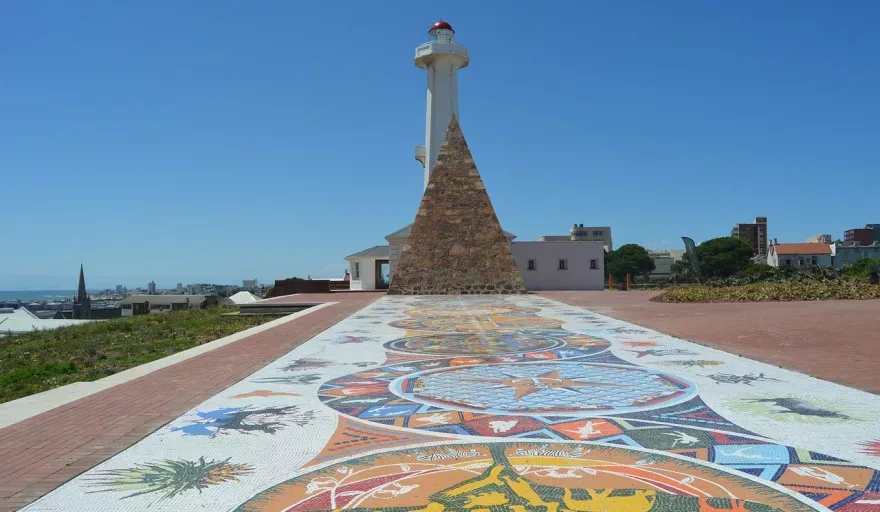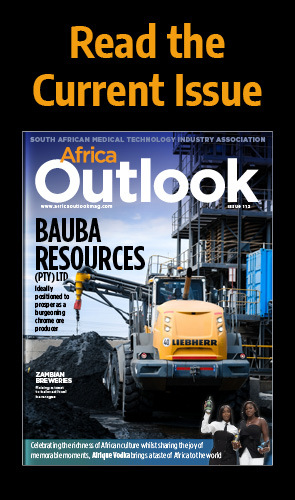INTRODUCTION
Often jostling with Morocco, South Africa is one of continent’s two epicentres of international tourism. Having consistently drawn more than 10 million people to its shores each year since 2016, numerous South African cities have continued to up the ante with their tourism offerings. But arguably none compare to the diverse, business-meets-pleasure scene of Nelson Mandela Bay.
Fittingly named after the country’s most famed figurehead and housing Port Elizabeth, SA’s fifth largest city, the municipality markets itself as an unrivalled, relaxing retreat, combining the best of urban and beach scenery for business travellers and tourists alike.
Take it from Ereni Louw, Coordinator of IT, E-Marketing and Research for Nelson Mandela Bay Tourism and a long-term resident, who describes the region as the ideal destination to experience a wide and diverse variety of experiences.
“During the summer periods we have some of the best and cleanest beaches in the world,” he states. “Further, wildlife experiences are available all year round and the variety of wildlife species, both marine and terrestrial, are in my opinion unrivalled to anywhere else in the world. There are more than enough family, adventure and entertainment activities to ensure that one can never get bored of being here.”
THE BUSINESS END
These extensive offerings and vast swathes of attractions in mind, it may come as no surprise that tourism has been the municipality’s primary economic driver since its inception back in 2001. Yet in recent times the industry has equally garnered a new wave of growth.
According to the most recently available statistics from Nelson Mandela Bay Tourism, for example, the region drew well over 300,000 foreign visitors in 2017, up from the 253,800 recorded in 2016.
Ultimately, it’s easy to see why, owed to a 40-kilometre coastline that boasts of sun-kissed golden beaches, warm water and even warmer weather. However, tourism isn’t the only driver of its thriving local economy.
The metro area has a similarly buoyant industrial sector, propelled by its 1.1 million-strong population and two of the country’s key ports – the Port of Port Elizabeth, and the Port of Ngqura. Owed to this standing as a major shipping nucleus, it has in turn become a crucial auto manufacturing hub, with the likes of General Motors, Volkswagen and Ford all prospering here.
Couple these key assets with its capabilities to host world-renowned conferences and corporate events of all kinds, and it’s no surprise that Nelson Mandela Bay has firmly established itself as an economic and social highlight of the Eastern Cape.
Q&A WITH NELSON MANDELA BAY TOURISM
While the municipality’s natural charisma and urban aura allow it to successfully market itself to an extent, Nelson Mandela Bay Tourism (formerly known as PE Publicity Association) has equally been helping to shine a line on the region in recent years.
Tasked with promoting the metropolitan area of Port Elizabeth, Uitenhage, Despatch and Colchester, the organisation has been making some major strides of late.
Here, Louw takes the time to answer our questions, showcasing exciting current and future developments taking place across this esteemed area.
Since inception, how has Nelson Mandela Bay Tourism developed and progressed in terms of its key objectives and the messages it tries to get across?
Ereni Louw (EL): With the focus now on the metropolitan area, the authority to use Nelson Mandela’s name gave us more unique selling points and thus the messaging and vision of this organisation has changed a bit. Where we previously only focussed on marketing the golden beaches of Port Elizabeth, we now could boast of the ‘Big 7’ wildlife experience (African elephant, lion, leopard, buffalo, rhino, southern right whale and the great white shark) with the southern gate of the Addo Elephant National Park now occupied within the municipal area. This is just 40 kilometres from the city centre, airport and main tourist beaches. And as such, we have become known as the best place to experience city, bush and beach in one trip.
How would you say Nelson Mandela Bay has developed in recent years as a business travel hub and what are the key reasons behind its growing appeal?
More from Africa Outlook
EL: Having all these leisure experiences so close to the city gives us a competitive advantage in that one can have a conference and quickly pop out to the beach for some fresh air. Group excursions pre, post and during conferences are easy and accessible, owed to the wide variety of things to do available within a 40-kilometre radius.
The airport is right in the middle of the city, making it easy and quick to access from anywhere in the metro within 15 minutes. It is also just five minutes away from where most of our conferencing venues are situated.
Nelson Mandela Bay is more than capable of hosting corporate events and private functions in a number of exciting venues in and around the Bay. Conferences are supported by state-of-the-art technical support who are ready and able to meet the needs of every conference. Video conferencing, well equipped venues and teambuilding getaways are all wrapped up in an effective, stable and scenic environment.
The average such facility caters for between 70 and 300 delegates, but bigger and smaller venues are also available. The largest venue caters for up to 1,400 delegates, for example. Equally, most are situated around the Bay area, but if you are looking for exclusivity and comfort, private game reserves, seaside resorts and luxury hotels also offer world-class conferencing venues and unique private function rooms.
The growth in this sector has recently created demand for a business convention bureau which the city is busy establishing, while future pipeline projects include a possible international convention centre on the beachfront at Kings Beach.
Are there any specific attractions, landmarks or places to eat and drink that you would recommend?
EL: I would recommend a visit to Route 67, an art route celebrating the life of Nelson Mandela that includes some of the city’s other historical treasures. An ocean or game safari is always a must, with various tour companies offering trips to experience both. In terms of places to eat, there are three hotspots – the Richmond Hill and Stanley Street area, Walmer and the beachfront area of Summerstrand.
What trends are transforming the tourism industry in Nelson Mandela Bay at present?
EL: References to the fourth industrial revolution have been going around the municipality lately, but in reality the innovation associated with this has been here for a while. Our focus has shifted towards digital marketing with a focus on social media and using user-generated content. Uber and Airbnb are performing well, the latter forcing the city to look at how to partner with these disruptive services in order to ensure bylaws are adhered to without placing additional restrictions that would detrimentally affect tourism in the destination.
How do you see Nelson Mandela Bay developing as a business travel hub over the next year to two years?
EL: As already mentioned, there are plans for an international conference centre. However, for this to work, it will have to be unique to Nelson Mandela Bay and offer a multitude of different uses. Location and design are also key to ensure that it is attractive, and we hope that if it does come to fruition then it can become an icon for the region.
What’s more, the city is currently working on attracting more events, including business events, and has made provisions for a new unit within the Economic Development, Tourism and Agriculture department that will focus on attracting these and their associated attendees to come here.
Are you optimistic about the future of the tourism industry in Nelson Mandela Bay? Are there any plans or projects in the pipeline?
EL: Yes, I am always optimistic. Through city-wide public-private partnerships, things will continue to progress. It is time for everyone to start working together and we have started to see that happen. Nelson Mandela Bay has been doing good, but there is so much untapped potential.
In terms of projects, we’ve identified the Port Elizabeth Harbour Waterfront Development, Bayworld, and the Statue of Light Project as key new developments. We hope that these projects will attract quite a few new job opportunities and become key to the economic growth of the metro area.
IN FOCUS: PORT ELIZABETH INTERNATIONAL AIRPORT
Known as the 10-minute airport, Port Elizabeth International Airport is situated within five minutes’ drive from both the city’s central business district and beach front, and less than 10 minutes’ drive from most of its most pre-eminent neighbourhoods.
It currently handles more than 1.2 million passengers, 60,000 scheduled flights and 800 tonnes of associated cargo per annum, these numbers having spiked since 2010 following the municipalities key involvement in the 2010 FIFA World Cup.
This, coupled with a general increase in tourism, led to facility expansions being made at the airport. Resultantly, its terminals can now handle up to two million passengers every year, housing a dedicated international arrivals and departures terminal to complement its upgraded amenities for domestic traffic.
TRANSPORT LINKS
While the central location of the Port Elizabeth International Airport is a key highlight of Nelson Mandela Bay’s efficient, effective transport system, it is not the region’s only success story to speak of in the way of transport offerings.
It’s harbours equally act as a key link to the rest of South Africa and indeed the world, while a number of modern highways provide easy access for travellers from as far and wide as Durban and Cape Town to reach the municipality.
Upon arrival, you’ll find an abundance of taxi, hotel transport and car hire options, while shuttle services act as a key service in getting to and from the airport and around the city. Municipal buses also operate throughout the region on a frequent, timetabled basis.
For the more adventurous, scenic helicopter tours are also available to those who want to get a bird’s eye view of the Bay, from affordable five-minute flips to half an hour charters.
“As a city, we have many transport options available,” Louw states. “The use of a car, own or rented, is probably the best option. But the city is known as a 15-minute city for a reason – it is very easy to get around.”



























